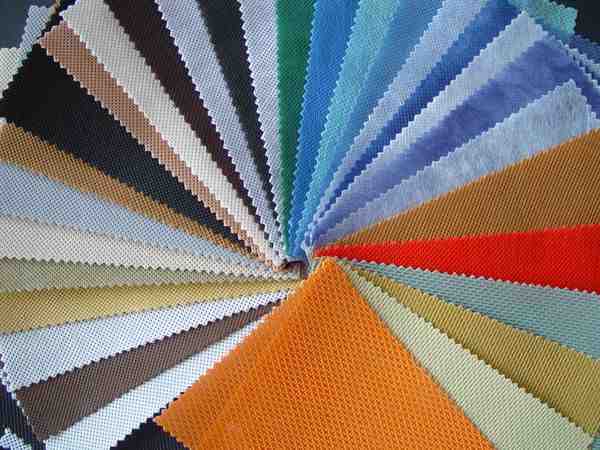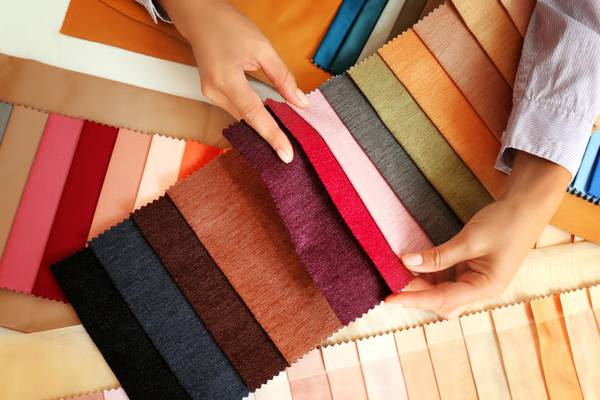As one of the most important indexes of clothing comfort,the air permeability of woven fabric has been
widely concerned by the industry.This paper analyzes the relationship between the airpermeability of woven fabric and
Weaving process parameters,In order to explore the influence of backbeam technology on fabric air permeability, woven fabrics of the same specification were woven under different back beam heights,and the air permeability of grey fabric was tested. The relationship between air permeability and surface structure of woven fabric and back beam height were analyzed.and the regression equation between air permeability of fabric and height of back beam was obtained. The results showed that the air permeability of woven fabric is positively correlated with the height of back beam duringg weaving. The improvement effect of air permeability caused by adjusting the height of back sill can be reflected in the finished fabric by adopting appropriate finishing process.
[Keywords] air permeability ; woven fabric ; back beam height: inter yarn porositys ; fabric surface structure

1.The relationship between fabric breathability and comfort of taking
With the development of society and the improvement of people’s living standards, people’s requirements for clothing comfort are becoming higher and higher, and research shows that the important factors reflecting the comfort of clothing are: fabric insulation, moisture permeability, water permeability, breathability, etc. Breathability mainly affects the comfort of clothing from the following aspects The following aspects affect the comfort of clothing. First of all, if the fabric is easy to air permeability, it is easy to water vapor and Liquid water is also easy to permeate, so the previously discussed moisture vapor permeability and Breathability is closely related. Secondly, the heat insulation performance of the fabric mainly depends on the static air contained in the fabric, and this factor is in turn affected by the structure and yarn, so the air permeability of the fabric also has a certain relationship”. In alpine regions, fabrics with little breathability are needed to ensure their In the hot area, it needs the fabric with large air permeability to ensure its good moisture permeability and high heat dissipation performance.
Since the breathability of the fabric is closely related to the comfort of taking, therefore Each standard has higher and higher requirements for the breathability of fabrics, such as in the old national Standard GB12014-2009 “anti-static clothing”, the non-coated woven fabric The air permeability requirement is ≥ 30mm/s; in the latest national standard GB12014 a 2019 “anti-static clothing”, the air permeability of non-coated woven fabrics required
for = 50mm/s”. Due to the changes in the market and the update of the standard, Yuanfeng Textile Technology Research Company in the past, some of the thicker and heavier grammage woven fabric, the air permeability can not meet the latest standard requirements, in order to improve the woven fabric In order to improve the air permeability of woven fabrics while meeting the requirements of the new national standard, the company has improved the air permeability of fabrics. Performance has been improved, this paper mainly discusses the relationship between woven fabric breathability and back beam In order to improve the air permeability of woven fabrics and meet the requirements of the new national standard, the company has improved the air permeability of fabrics.
Theoretical analysis
2.1 Breathability measurement method
The breathability of fabric can be measured by the air permeability. The air permeability is a measure of the air flow from one side to another under specified area, pressure and time, the airflow from one side The air permeability is the speed of air flow from one side to the other under the condition of specified area, pressure and time, and the unit is (mm/s). This paper uses the air permeability test method to measure the air permeability of woven fabrics.
2.2 Woven fabric air permeability influence factors
The factors of woven fabric air permeability are divided into fiber, yarn and fabric three level. The factors influencing fiber level include fiber cross-sectional shape, fiber fineness, fiber type and fiber moisture return rate, etc. Yarn level influencing factors specifically include yarn number, yarn structure, yarn twist, etc. Fabric Level influence factors include fabric tightness, fabric tissue structure, fabric Fabric thickness, fabric geometry, etc.
2.3 Woven fabric breathability fabric level analysis
There are many factors affecting the air permeability of woven fabrics, and this paper mainly discusses the air permeability from the weaving process. This paper mainly discusses the air permeability from the weaving process, so it is not analyzed at the fiber level and yarn level. At the fabric level, air through the interwoven pores of the woven fabric at a certain flow rate. When the pore space becomes smaller, the airflow is resisted and the air permeability becomes smaller. When the pores become larger, the airflow is resisted less and the air permeability becomes larger. In the fabric, the woven fabric should be regarded as a three-dimensional structure. In order to facilitate the study, the direction of weft yarn extension is regarded as X axis, the direction of warp yarn extension is regarded as Y axis, and the direction of warp and weft yarn extension is regarded as Y axis. The direction of weft yarn extension is regarded as the X-axis, the direction of warp yarn extension is regarded as the Y-axis, and the session curvature wave height formed after warp and weft interweaving is regarded as Z-axis.
The permeability pores are mainly divided into the following two kinds: XY axis pores, Z axis pores. Pore. Among them, XY axis pore in the fabric plane to form a rectangular pore, this Pore is the main pore of the woven fabric breathable, warp and weft yarn intertwined, the Along the width and length direction to form the XY plane, warp and weft yarn interweaving to form a rectangular In the case of a certain number of yarns, the warp density and weft The greater the warp density, the greater the X-axis gap of the rectangular seam. The higher the warp density, the smaller the rectangular slit X-axis slit, and the higher the weft density, the smaller the rectangular slit Y-axis slit. The smaller the original: Z-axis pores are formed after the warp and weft yarns are interwoven, and due to the presence of flexural
The existence of wave height, warp and weft yarn in the thickness direction is not closely appressed, but there is a certain pore, the size of this pore by the fabric Tightness, on the machine process and other factors.
2.4 Analysis of the relationship between the height of the back beam and the Z-axis aperture
The height of back beam affects the tension of upper and lower warp yarns. When the height of back beam is not equal to the height of chest beam, unequal tension bobbin is formed. When high back beam is used, the upper warp yarn tension is small and the lower warp yarn tension is large, so the upper warp yarn is relatively relaxed during weft beating and it is easier to form high flexural wave, thus increasing the Z-axis aperture height and thus improving the air permeability. Theoretically, the use of a low back beam lower than the chest beam can also form unequal tension shuttles, thus enhancing the air permeability, but in normal production life, the upper machine process generally does not use a low back beam for weaving, so the effect of a low back beam on air permeability is not discussed.
Raise the rear beam to form unequal tension shuttle, the upper warp yarn flexural wave height gets increased, thus improving the gap between Z-axis yarns, as a way to increase the breathability of the fabric also cloth. The above are theoretical analysis based on production practice and test experience, the following test to verify the reasonableness and feasibility of the way.
3 Test
3.1 Test material
Test sample: The test specimen is woven fabric, using CVC60/4032S/2×32S/2100×532/1/ as the test sample. A total of 8 kinds of rear beam height level, where the rear beam height of 980mm sample for the initial level, recorded as 0mm, the remaining 7 kinds of levels in turn, each raise 10mm, to 70mm, each level to do 10 times the test, a total of 80 tests.

3.2 Test apparatus
Test sample weaving apparatus: GA731B type rapier loom, all samples using the same warp gauge repair line, the whole sizing process, on the machine process (except for the height of the rear beam), the test will be strictly controlled as a single-factor variable test.
3.3 Test test apparatus
This test uses YG461E/I digital air permeability meter-
3.4 Test method
In this test, the height of the rear beam is continuously raised from the equal tension shuttle, and the height of the rear beam is raised by 10mm each time.
when its Z-axis aperture, when the height of the rear beam is raised, its Z-axis aperture limit. In order to raise to increase 70mm, it was found that the weaving efficiency of the loom decreased, which was not conducive to production weaving, so the height of the rear beam was no longer raised.
4.Results and discussion
4.1 Significance analysis
Before data fitting, the significance of the factor on the test results should be analyzed, according to the actual situation, using a one-way test
ANOVA, the method can discuss whether a factor has a significant effect on the test results. If the factor has a higher significance on the test results, the higher the confidence of the curve fitted to the data.
For the relative back beam height h, the significance analysis of the factor relative back beam height h on fabric breathability is very significant, so the data can be fitted to the series function
Analysis, in order to get the relative back beam height and fabric breathability between the quantitative correspondence.
4.2 Fitted function analysis
The warp session curvature wave height will increase with the height of the back beam in a certain range, and the effect of raising the back beam is more obvious at first, but it will become less and less significant as the height of the back beam increases.
Beam height to enhance the effect is less and less significant, because in a certain range, you can use a variety of functions to fit the same set of data, can get the significance of the better regression equation, but combined with the theoretical analysis, it can be seen by lifting the rear beam height of the air permeability is not very large, but the lifting effect is more stable. In line with the logarithmic function characteristics: as x increases, the effect on the dependent variable y after the unit change of x decreases continuously. Therefore, the equation of this lifting method is fitted with logarithmic function regression equation will be closer to the reality.
The height of the rear beam is linearly fitted to the regression analysis, and it can be seen from the data that the relative height of the rear beam with equal tension shuttle opening is recorded as
0m, and the regression equation is obtained by fitting the data with a logarithmic function: Y=a+blnx, where a represents the air permeability under equal tension shuttle opening, blnx
represents the relationship between the height of the back beam and the air permeability, after statistics and calculation, the regression equation of the logarithmic function between the height of the back beam and the air permeability of the woven fabric is: Y=54.15+3.86 Inx.

4.3 Finished air permeability increase effect
After lifting the beam will enhance the post-blanket breathability, in actual production, some of the performance achieved in the blanket stage to enhance the performance of the woven fabric in after finishing, the enhanced performance will disappear or very insignificant. According to production practice experience, woven fabric air permeability after finishing will have a very significant decline, the reason is that the finishing process will act on the surface of the fabric and the yarn inside, directly affecting the fabric yarn ask pore space and fiber ask pore space, if the overall finishing pore rate decreases, the air permeability decreases, if the overall finishing pore rate increases, the air permeability increases, for cotton fabrics, flame retardant finishing, resin finishing, oil repellent finishing, biological finishing, coating finishing will make its air permeability decline. Oil and water repellent finishing, biological finishing, coating finishing will make its air permeability decrease. If the air permeability effect brought by lifting the rear beam can not be maintained in the rear finishing, then this method is not effective to improve the air permeability of the fabric.
Will increase, so that the gap between the warp yarns between the fabric becomes smaller, XY axis rectangular pore area becomes smaller, will inevitably lead to a decline in woven fabric breathability. In the long car finishing process, the weft density will be reduced, can better protect the fabric in the blank stage formed Z-axis pore space, thus retaining the height of the rear beam to enhance the breathability of the effect. However, because the XY-axis rectangular pores will be narrowed, the overall air permeability will still be significantly reduced. Although the air permeability of the woven fabric still decreases significantly after the rear beam height is elevated and the finishing is done1, the air permeability is elevated compared to the finished product without the elevated rear beam height, the essence of which is that the high rear beam fabric is slightly fluffier than the middle rear beam fabric surface. Although the improvement is not large, the improvement of finished air permeability is very stable after testing, which indicates that the improvement of back beam height has a non-significant but relatively stable effect on the improvement of finished air permeability.
5.Conclusion
Among the many factors affecting the air permeability of woven fabrics, the pore space between yarns is the biggest influencing factor. Breathability, after proof and test, the following conclusions.
(1) the height of the rear beam of the loom can significantly affect the air permeability of the woven fabric. The use of unequal tension shuttle opening can enhance the air permeability, the larger the unequal tension shuttle opening The larger the unequal tension shuttle opening, the better the air permeability.
(2) The effect of the rear beam height on the air permeability of woven fabric improves as the rear beam The number correspondence can be fitted by logarithmic function. The essence of this method is to increase the flexural wave of warp yarn, thus The essence of this method is to increase the flexural wave of warp yarn, thus making the yarn pore between warp and weft yarn larger.
(3) The air permeability of the woven fabric in the finishing process basically shows a significant decrease trend, after the long car finishing process, although the fabric breathability is still After the long car finishing process, the fabric air permeability still decreases, but the air permeability can be retained by changing the height of the rear beam.
 3M
3M Ansell
Ansell Dellta Plus
Dellta Plus Drager
Drager edelrid
edelrid Honeywell
Honeywell JUTEC
JUTEC lakeland
lakeland MSA
MSA New Pig
New Pig Weldas
Weldas